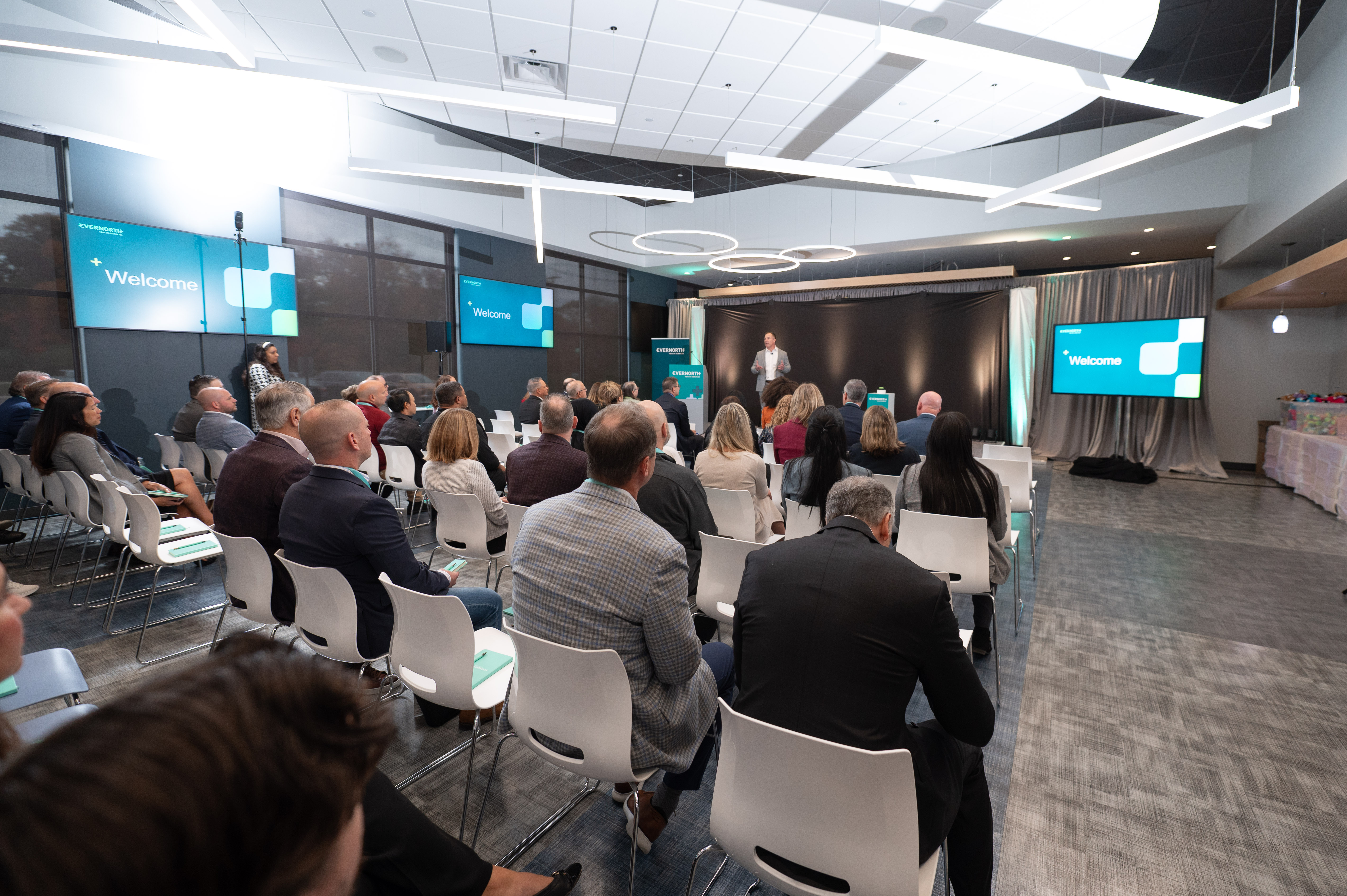While there’s a lot to be thankful for in the fight against cancer, the unfortunate truth is that incidence rates are rising in the United States for many common types, particularly among women. One in two men and one in three women will be diagnosed with cancer in their lifetime, and this disease remains the country’s second-leading cause of death.
“We know the data are showing us that cancer prevalence is on the rise,” said Chad Kersting, Director of Growth Strategy at EviCore by Evernorth. “We’re seeing more and more requests related to cancer diagnosis, treatment and surveillance.”
The costs of a cancer diagnosis, both psychological and financial, can be a major challenge for patients. Between 38% and 77% of cancer patients experience medical debt, a significantly higher percentage than that of the general population. They are also nearly three times more likely to file for bankruptcy and 71% more likely to experience financial hardships than similar individuals without cancer.
There is also the impact of stress on patients and their caregivers. In cancer patients, the risk of depression is nearly twice that of the general population. About two in five caregivers for cancer patients also experience depression.
Living longer with cancer
Fortunately, cancer mortality has declined by more than a third over the last 30 years, sparing about 4.5 million lives, thanks in part to advancements in early detection and treatment. The five-year survival rate for all cancers combined increased from 49% in the mid-1970s to 69% from 2014 to 2020.
However, that also means people are living longer with cancer as a chronic condition requiring ongoing therapy — and the costs can present a significant challenge to survivors. The cost of cancer care in the United States was about $183 billion in 2015 and is projected to exceed $245 billion by 2030, according to research published in Cancer Epidemiology, Biomarkers & Prevention.
The benefits of early detection
Early detection of cancer yields better health outcomes — from making treatments more effective, with fewer side effects and improved survival rates, to decreasing the financial and psychological costs of the disease. The five-year survival rates for two common cancers in women — breast and cervical — are 99% and 91%, respectively, when detected at an early stage. Also, it can cost up to seven times less to treat early-stage cancers than those identified in later stages.
While cancer screenings themselves do come at a financial cost to the health care system, they are a proven investment in public health. Screening for breast, cervical, colorectal and lung cancers have been shown to reduce cancer-specific mortality and are generally considered cost-effective or even cost-saving.
Yet even with these benefits, many people still don’t get the screening they need. In fact, recent research found that only one in seven diagnosed cancers are found by a recommended screening test.
Why patients don’t get screened
Kersting also indicated that there are a few common reasons people don’t get screened for cancer, based on conversations EviCore has with patients:
- Fear: Fear in this context may take many forms. Some people fear the possibility of a cancer diagnosis and the impact it might have on themselves and their families. Others experience more generalized anxiety around medical tests. There are also concerns about physical effects related to the screening process. For example, in a survey on barriers to colon cancer screening, respondents cited fears about sedation, potential complications such as colonic perforation, and even the discomfort of bowel preparation.
- Health literacy: Many people are unaware of what screening services are recommended and covered by their health plan or employer. This reflects the broader challenge of health insurance literacy—only one in five U.S. adults feel confident in their ability to understand, evaluate, and effectively use health care and services. For instance, even though most health plans cover preventive screenings, patients often mistakenly believe they will face out-of-pocket costs, which can be a deterrent. Others may be unsure about which providers are in-network or how frequently screenings are covered, adding to their confusion and hesitation.
- Logistical barriers: Balancing work, family and other obligations, many people feel they simply don’t have time to get screened. Practical challenges like travel distance, lack of transportation or inconvenient facility hours can also make it harder to prioritize preventive care. Vulnerable communities face more of these barriers and are therefore even less likely to obtain timely screening.
Increasing cancer screenings through smarter outreach
Closing gaps in cancer screening remains one of the most pressing challenges in preventive care. Despite clear evidence that early detection improves outcomes and lowers costs, many individuals still face barriers — whether logistical, financial, or educational — that prevent them from receiving timely screenings for colon, breast, lung, and cervical cancers.
What’s becoming clear across the industry is that no single strategy is enough. Traditional outreach methods — such as phone calls or mailed reminders — reach some patients, but often fail to engage at scale. At the same time, digital channels alone cannot solve the problem unless they are embedded into patients’ everyday experiences in a meaningful way.
The opportunity lies in rethinking outreach as part of a connected ecosystem of care. When preventive health messages are integrated into the interactions patients already expect — like appointment confirmations or prior authorization notifications — they become harder to ignore and easier to act upon. When those touchpoints are reinforced with personalized education and direct outreach, engagement rates rise significantly.
This layered strategy is already showing measurable promise. Outreach approaches that blend expected interactions with personalized calls have achieved contact rates as high as 80%, while average scheduling rates reach 60% for mammograms and 40% for gynecology appointments1. Beyond the numbers, what makes this impactful is the clinical alignment it creates: primary care physicians are seamlessly looped in, equipped with timely updates on appointments and results, and able to close gaps more effectively.
These results illustrate how preventive screenings can serve as a gateway to whole-person care — a model that recognizes early detection not as an isolated event, but as the foundation of a connected, patient-centered strategy for health.
To hear more about how these approaches are being applied in practice, listen to EviCore’s National Physician Executive, Eric Gratias, as he shares insights on advancing cancer screening and reshaping preventive care.
When it comes to preventive care outreach, EviCore partners with health plans to make the process as smooth and easy as possible. As an enhancement to its specialized utilization management solutions, EviCore’s Preventive Care Outreach program can help health plans improve health outcomes, lower costs and increase CMS scores.



